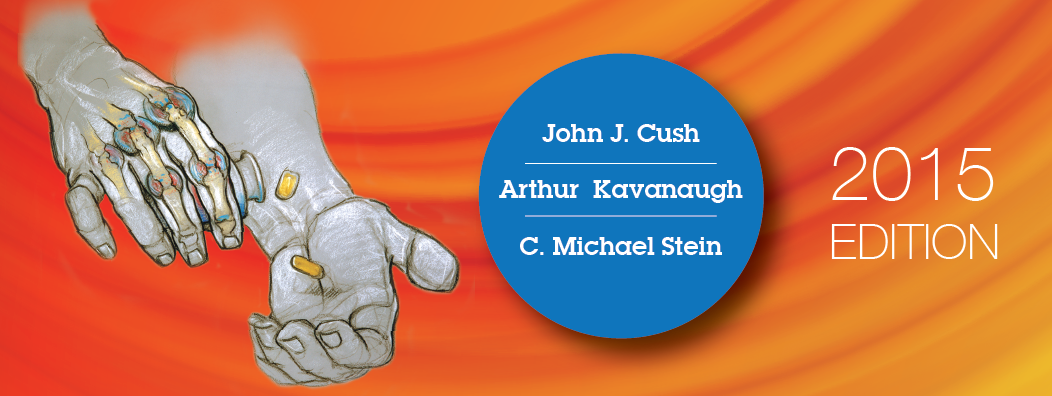Sarcoidosis
Last updated: October 31, 2014
Synonyms: Boeck’s sarcoid, uveoparotid fever, Loefgren’s syndrome.
ICD-9 Code: Systemic, 135.0; sarcoid arthritis, 713.7.
ICD-10 Code: D86
Definition: Sarcoidosis is a chronic systemic inflammatory disorder of unknown etiology characterized by noncaseating granulomata at involved sites.
Etiology: Although exposure to an infectious organism or some other environmental agent has long been hypothesized to be etiologically relevant to the disease, none has been conclusively implicated. A variety of infectious agents (particularly intracellular pathogens such as fungi) can induce similar histopathologic changes, but none has been reliably recovered from sarcoid lesions. Similar changes may also be seen in association with malignancy.
Pathology: Based on histopathologic studies, activated CD4+ helper T cells are considered to play a central role in the orchestration of sarcoid inflammation. Although commonly considered a pulmonary disorder, the disease process affects many other organ systems. Indeed, approximately one-half of patients with sarcoidosis present initially with constitutional symptoms such as fever or symptoms related to inflammation at extrathoracic sites, including musculoskeletal complaints. Extrathoracic involvement is also common throughout the course of the disease. For example, approximately 10% to 15% of patients with sarcoidosis have arthritis.
Demographics: Sarcoid typically affects young and middle-aged adults. There is a slight female preponderance. Prevalence is highest among African Americans (~40 per 100,000) and whites of northern European extraction (~60 per 100,000). It has been suggested that patients with sarcoidosis carrying the HLA-B8 allele may be more prone to develop erythema nodosum and acute arthritis, whereas patients with sarcoidosis positive for HLA-DR3 may be more likely to develop the chronic form of arthritis.
Cardinal Findings: Sarcoid often affects multiple organ systems.
—Pulmonary: Although some patients may never report pulmonary symptoms, >90% show abnormalities on chest radiographs. Characteristic abnormalities have been classified into three types: type I, bilateral hilar lymph-adenopathy, sometimes associated with right paratracheal lymphadenopathy; type II, lymphadenopathy as in type I plus pulmonary infiltrates; and type III, pulmonary infiltrates without lymphadenopathy. Patients with type I chest radiographic findings achieve spontaneous remission much more frequently than those with types II and III and typically require far less therapeutic intervention.
—Musculoskeletal: The most common musculoskeletal complaint of sarcoidosis is arthritis, which affects 10% to 15% of patients. Sarcoid arthritis may occur in two distinct patterns, and arthritis arising early in the disease course (e.g., within the initial 6 months) differs from that occurring later. Early arthritis, which is the more common type and may be the initial symptom of sarcoidosis, typically manifests as oligoarthritis of the ankles and, less commonly, the knees. In addition to true arthritis, patients may also have tenosynovitis and periarticular swelling. If joint effusions are present, they are often noninflammatory. Early sarcoid arthritis is often self-limited, lasting for days to months, and the prognosis is excellent. For example, most patients with Loefgren’s syndrome (defined as acute arthritis, erythema nodosum, and bilateral hilar lymphadenopathy), which occurs in a subset of patients with early disease, achieve spontaneous remission. Late sarcoid arthritis typically occurs >6 months after disease onset. Although it may manifest as monarthritis, it typically presents as an oligoarthritis, with two or three joints involved. In decreasing order of frequency, affected joints include the knees, ankles, and proximal interphalangeal joints. In addition to synovitis, patients may have periarticular swelling. When this occurs in the fingers (dactylitis or sausage digit), it may resemble the findings seen in the seronegative SpA, such as reactive arthritis. Although it may also be transient, late sarcoid arthritis persists more frequently than does early arthritis, which has implications for the therapeutic approach. Last, although joint x-rays in early sarcoid arthritis are typically normal, changes may be noted in late arthritis, including cystic changes in the middle of the phalanges.
—Dermatologic: Approximately one-third of patients with sarcoidosis have one of the varied dermatologic manifestations of this disease. Erythema nodosum often occurs early in the disease course and typically remits spontaneously. It is associated with early arthritis, occurring in two-thirds of such patients. Late arthritis is not associated with erythema nodosum but rather with some of the more chronic dermatologic manifestations of sarcoidosis, including plaques, papules, and nodular and scaly lesions. Lupus pernio lesions are characteristic of sarcoidosis and appear as chronic, indurated papules or plaques, red-brown to purple in color, swollen, shiny skin lesions over the lips, cheeks, ears, and mid-face and are more common in African-American women.
—Other: Other extrathoracic manifestations of sarcoidosis are relevant from a rheumatologic standpoint because they may mimic various inflammatory diseases. Ocular involvement, especially uveitis, may develop in >20% of sarcoid patients. Uveitis is associated with a variety of systemic inflammatory disorders. Sarcoid involvement of the exocrine glands of the head (e.g., parotid, lacrimal) may resemble the findings of Sjögren’s syndrome. Sarcoidosis of the skeletal muscles, although it may be asymptomatic, may present with a clinical picture resembling inflammatory myositis. Finally, sarcoid may also affect the liver, the central (Bell’s palsy) and peripheral nervous systems, the lymphoid organs, and the kidney.
Diagnostic Testing: No single clinical test is diagnostic of sarcoidosis. Non-specific findings include leukopenia, lymphopenia, anemia, and increased hepatic enzymes or alkaline phosphatase. Hypercalciuria and hypercalcemia are seen in <10% of patients.
—Kveim test: Historically, this was used to make a diagnosis. Material obtained from a sarcoid granuloma was injected intradermally, and the patient was as- sessed for development of a delayed-type hypersensitivity reaction. However, the sensitivity and specificity of this test were disappointing, and it is no longer acceptable to inject tissue from one patient into another for diagnostic purposes. Thus, this test is no longer performed.
—Angiotensin-converting enzyme: Serum levels reflect macrophage activity in granulomata and are elevated in ~60% of patients with sarcoidosis. However, elevation in angiotensin-converting enzyme level is not specific for sarcoidosis as it is in other conditions. Moreover, because they reflect macrophage activity, they are most commonly elevated in patients with substantial active pulmonary involvement. Thus, angiotensin-converting enzyme levels are a poor screening diagnostic tool for unselected populations and for patients with less typical presentations.
Imaging: Chest radiographic abnormalities are commonly seen. Many investigators believe that the presence of bilateral and right paratracheal lymphadenopathy is both consistent with the diagnosis of sarcoidosis and associated with a benign prognosis to the extent that further diagnostic intervention may not be warranted. Gallium scans may show uptake in the chest, lymph nodes, and parotid glands during periods of active disease.
Keys to Diagnosis: The diagnosis of sarcoidosis is usually achieved by the constellation of clinical findings, exclusion of diseases with similar conditions, and (if indicated) demonstration of noncaseating granulomata in histopathologic specimens.
Differential Diagnosis: Diseases with clinical presentations similar to that of sarcoidosis include infectious diseases (e.g., mycobacteria, fungi), lymphopro-liferative neoplasms, foreign body reactions, Sjögren’s syndrome, SpA, and SLE.
Therapy: The therapy for sarcoidosis varies and is usually driven by the most severe organ involvement. In many cases, therapy focuses on pulmonary involvement, although involvement of other organs (e.g., uveitis) sometimes mandates aggressive treatment. Corticosteroids, often at relatively high doses (>40 mg/day), have been the therapeutic mainstay for severe sarcoidosis.
Early sarcoid arthritis, because it is often self-limited, is usually treated with NSAIDs and simple analgesics. Intraarticular injection of steroids may be helpful in those with oligoarthritis. In refractory cases, a variety of agents have been tried, including colchicine, MTX, other DMARDs, and TNF inhibitors. Oral corticosteroids are seldom indicated solely for sarcoid arthritis, but patients treated with steroids for other manifestations may show dramatic improvement in their arthritis. Uncontrolled studies show TNF inhibitors to be inconsistently effective in pulmonary sarcoid but effective in those with extrapulmonary disease.
BIBLIOGRAPHY
FitzGerald AA, Davis P. Arthritis, hilar adenopathy, erythema nodosum complex. J Rheumatol 1982;9:935–938. PMID:7161784
Giuffrida TJ, Kerdel FA. Sarcoidosis. Dermatol Clin 2002;20:435–447.PMID:12170877


